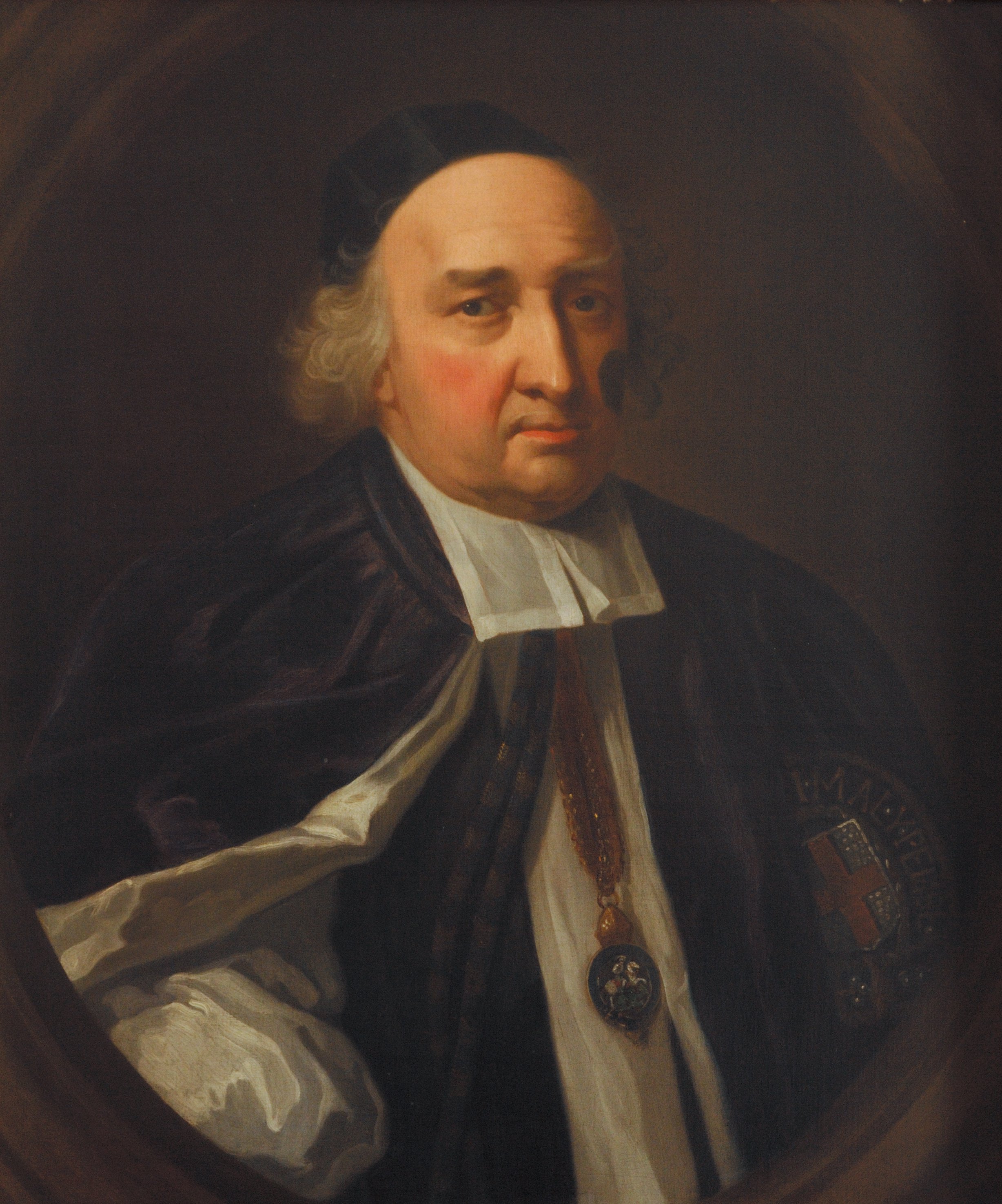14. Portrait of President Peter Mews, copy after Michael Dahl
 Portrait of President Peter Mews, copy after Michael Dahl, H 72.4 x W 59.7 cm, oil on canvas
Portrait of President Peter Mews, copy after Michael Dahl, H 72.4 x W 59.7 cm, oil on canvas
The sitter of this portrait (one
of the two we have of him), our President Peter Mews (1619-1716), played an
important role both in College’s seventeenth-century history and in national
politics. He
matriculated as a scholar in 1637, was President in 1667-1673 (and Vice
Chancellor in 1669-73), from which he moved on to become bishop of Bath &
Wells in 1673-84 and then of Winchester in 1684-1706. He led probably the most
varied, and even adventurous, life of all our Presidents to-date. He fought and
was taken prisoner at Naseby as Captain Mews on the royalist side, been a spy
for the exiled Charles II during the Protectorate years, and in 1685, when
already a bishop, got himself wounded while commanding royalist artillery at
Sedgemoor. The wound he received there explains a black patch on his cheek, and
he is wearing the robes of the Order of Garter. As President, Mews was a part
of a long dynasty going back to William Laud: he married Mary, daughter of President Baylie, who was married to Elizabeth, Laud’s niece. There is a
case to be made for Elizabeth Baylie, who died in the Lodgings while Mews was
President, being the connecting force between different generations of the
seventeenth-century Heads of House, but we’ll save the story of this formidable
lady for her own portrait in a later blog.
His scholarly achievement appears less to our credit when
viewed from the modern perspective. The best known product of his pen was the Ex-ale-tation of Ale (1671, attacking coffee houses as
disloyal, not perhaps a cause likely to attract much support in the 21st-century
University), and his Latin oratory ‘on at least one occasion was praised for
the appropriateness of what he said’, in that nice turn of phrase that the Oxford Dictionary of National Biography has. He did lay aside his
political affiliations for the case of academic freedom as the Visitor of Magdalen
in James II’s reign, however (which led to him playing a significant role in
the politics of 1688-9).
The portrait is first recorded in College in the 1728
catalogue compiled by President Holmes, where it is said to be a ‘Copy after Mr
Dahll’ (the suggestion in the 1929 Catalogue
of Oxford Portraits by R. Lane Poole that the portrait ‘may well have
existed there since the Presidency of the subject’ is clearly wrong, as it was
painted after the battle of Sedgemoor, as indeed was our other portrait, which
shows the battle in the background). Michael Dahl (1659-1743) was a Swedish
portrait painter, who had an extremely successful career in England between
1682-4 and after 1689 – his absence in England in 1684-9 makes the chronology
of this portrait interesting, as references to Sedgemoor were not necessarily
tactful after the fall of James II, but both Mews and Dahl have found
themselves a place under the new regime. Dahl’s career opens a window into an
incredibly international world of elite portrait painting of that era. He was
born and educated in Stockholm, his teacher, Martin Hannibal, was Hungarian,
his fame was made in England, but he also worked at Paris and at Rome, where he
was supported by the exiled Swedish Queen Kristina – a pan-European experience
to match our own age. ‘A man of great modesty and few words’, as his
contemporary George Vertue, whose notebooks are one of the most important
sources for British art history of that time, called him, Dahl provided successful
competition to Godfrey Kneller as a painter to the British elite. This
portrait, a thoughtful observation of an interesting and vividly shrewd man,
provides a good glimpse of his manner – and gives us an insight into a fascinating and important moment in this College’s early history.
View the painting on Art UK
here
 Dr Georgy Kantor, Tutorial Fellow in Ancient History and Keeper of the Pictures
Dr Georgy Kantor, Tutorial Fellow in Ancient History and Keeper of the Pictures